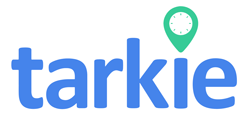Have you thought about how safe your employee attendance data is in the cloud? With more cyber threats, like phishing, companies in the Philippines need to focus on cloud security. Protecting data isn’t just a tech job; it’s everyone’s duty. We’ll look at key steps to keep your attendance data safe and follow local laws.
Key Takeaways
- Every employee plays a crucial role in ensuring data security.
- Phishing remains a significant cyber threat leading to data breaches.
- Single Sign-On (SSO) can simplify password management and strengthen security.
- Using a VPN is essential for remote workers to protect data.
- Regular training is vital to raise awareness about cybersecurity practices.
- Implement role-based access control to secure sensitive attendance data.
Understanding Attendance Management Systems
An attendance management system is key for managing employee attendance. It tracks leaves and work hours. These systems make processes smoother, cutting down on data errors and boosting efficiency.
Automated tracking saves managers a lot of time. They can focus on important tasks instead of tracking manually. This ensures they follow labor laws well.
These systems have important parts like biometric devices for accurate data. They also have software for managing records and reports.
Cloud-based attendance systems connect well with HR systems. This helps manage the workforce better. It keeps accurate records of work hours, helping with payroll and following laws.
These systems work well for different work setups like remote, hybrid, or on-site. They make sure everyone is accountable and transparent. Employees can use them from anywhere, perfect for today’s work styles.
They offer features like real-time tracking and detailed reports. This helps businesses understand attendance patterns and handle complex schedules easily.
Importance of Cloud Security in Attendance Management
Cloud security is key in managing employee attendance data. This data is very sensitive. So, companies must use secure cloud solutions to keep it safe from unauthorized access and data breaches.
They should use advanced cybersecurity like encryption and multi-factor authentication. This makes attendance data much safer.

Cloud attendance systems help cut down on errors. Reports show an 80% drop in mistakes. Companies see a 30% boost in efficiency with these systems.
These systems also help avoid buddy punching and payroll errors. Buddy punching can cost up to 20% of payroll. But, these systems reduce these risks.
Using new tech like IoT and AI makes data more accurate by 35%. It also makes tracking attendance 60% faster. These steps improve security and make work better, even for remote teams.
So, businesses using secure cloud solutions save up to 40% on admin tasks. They also keep attendance data safe.
Key Features of Attendance Data Management Systems
Modern organizations need effective attendance data management systems. These systems use biometric technology for accurate and secure tracking. Features like fingerprint or facial recognition prevent fake entries, ensuring real attendance records.
Mobile apps are also key, letting employees and managers track attendance anywhere. This makes managing attendance easy and convenient.
Cloud-based systems are great because they integrate well with payroll and HR. They make calculating wages easier and cut down on paperwork. This helps companies follow labor laws and work more efficiently.
Here’s a table showing important features of attendance management systems:
| Features | Benefits |
|---|---|
| Biometric authentication | Eliminates manual fraud, accurate clocking in/out |
| Mobile access | Convenient management, real-time updates |
| Advanced analytics | Insights into employee attendance patterns, increased productivity |
| Scheduling capabilities | Ensures proper shift coverage, minimizes conflicts |
| Automated notifications | Simplifies absence management, proactive handling |
Following labor laws is crucial for attendance management. These systems help calculate working hours, overtime, and breaks accurately. This reduces the risk of legal issues.
Flexible work schedules are common now. In the Philippines, companies need cloud-based attendance systems that grow with them.
Using these attendance data management tools can boost productivity and cut down on errors. For more on making payroll easier, see this resource.
Data Protection Regulations: What You Need to Know
It’s crucial for companies to understand data protection rules, like the General Data Protection Regulation (GDPR). This law is strict about how data is collected, processed, and stored. Breaking these rules can result in big fines, making it a top priority for businesses in the Philippines.
Companies can face huge costs, up to $4.88 million, from data breaches. Keeping data safe is key to avoiding these risks. Here are some best practices:
- Get consent from employees before collecting their personal info.
- Be clear about how data will be used and stored.
- Use strong security measures, like multi-factor authentication, to protect data.
Employers need to check their data protection efforts regularly. Audits and compliance checks help spot weak spots in handling employee data. Ignoring these rules can harm a company’s reputation and trust with customers.
With cyber threats growing, following data protection laws is vital. It’s not just about avoiding fines. It’s also about keeping employee data safe. Companies that focus on data management and privacy can build trust and loyalty, opening up new opportunities.

Assessing Organizational Needs for Attendance Tracking
Before picking an attendance tracking software, it’s key to know what your organization needs. Aligning with your goals is crucial. Look at how many employees you have, their schedules, and if you need to follow certain rules.
Cloud-based attendance systems make tracking easier by giving managers instant access to data. They can see who’s in and who’s not, and fix problems fast. This cuts down on mistakes made by hand, making your team’s records more accurate.
More companies are allowing remote work and flexible hours. This is important because many workers have been working from home. Using software that fits these changes can make your team happier and help you reach your goals.
Choosing cloud-based systems can also save money. You won’t need to spend on physical equipment or upkeep. Plus, alerts can help managers stay on top of who’s coming in late or missing work.
Linking attendance software with HR and payroll keeps your data in sync. This makes tracking attendance better and boosts your team’s work. You can also spot areas that need work or changes.
Really understanding what your organization needs helps you make better choices about attendance tracking software. It sets your company up for long-term success by creating a culture of responsibility.
Choosing the Right Cloud-Based Attendance Software
Choosing the right cloud-based attendance software is key for managing employee attendance well. Companies need to look at several things. These include features, how easy it is to use, cost, how it grows with your business, and support from the vendor. Each one is important to make sure the software fits your business’s needs.
Cloud-based attendance systems can cut costs by a lot. Businesses can save up to 20% on expenses and make more money by switching from old systems. This is because you pay a subscription fee instead of buying expensive hardware and software upfront.
It’s also important to think about how well the software integrates with other systems. The best cloud-based attendance software should work well with HR and payroll systems. This makes work flow better and cuts down on mistakes from manual timekeeping.
Keeping data safe is another big thing to consider. Cloud systems use strong security like encryption and backups to protect employee data. Studies show that using good security can cut data breach risks by half.
Cloud systems also give you a clear view of when employees work. This helps managers spot patterns and improve productivity. Plus, you can access it on your phone, making it easy for employees to track their hours and take leave from anywhere.
When making your final choice, don’t forget about training. Companies that train well see a 40% better adoption rate. This shows how important it is to pick a system that’s easy to use and meets your business’s needs.
Implementation Best Practices for Cloud Attendance Systems
Introducing cloud attendance systems needs careful planning and clear communication. Companies should create a detailed plan. It should include timelines, who does what, and what everyone needs to know.
Keeping employees updated on system changes is crucial. It helps manage their expectations and makes the transition smoother. In the Philippines, training can be improved with workshops, webinars, and interactive sessions. This helps staff use the new systems well.
Using attendance systems right can cut down errors by up to 80%. They also make payroll more accurate by 25%. Companies using biometric systems see a 50% drop in time theft, boosting efficiency.
Training employees well can increase system use by 40%. When training is thorough, productivity and data accuracy improve. This is key for following labor laws.
Regular audits keep attendance records accurate. This can reduce compliance issues by 30%. Following best practices ensures a smooth transition and builds trust in the workplace.
Training Employees for Effective System Use
Training employees well is key to getting the most out of an attendance management system. Companies should use different training methods. This includes in-person workshops, online tutorials, and user manuals. These help employees learn to use the system well, reducing mistakes and making changes easier.
In the Philippines, good training can really help small businesses. It makes employees use new technology better. This means they can work more efficiently and not waste time on old ways like punch cards.
Investing in training makes attendance tracking more accurate. Modern systems are easy to use on phones. This lets managers keep an eye on remote workers and those on the road.
Using a good attendance system helps with HR goals too. It makes employees more punctual and engaged. Getting feedback from staff helps make the system better. This creates a culture that values teamwork and change.
| Training Approach | Description | Benefits |
|---|---|---|
| In-person Workshops | Hands-on training sessions that provide direct interaction. | Promotes teamwork and immediate feedback. |
| Online Tutorials | Self-paced learning modules accessible from any device. | Flexible learning options for different schedules. |
| User Manuals | Written guides that outline system functionalities and processes. | Provides a reference for employees when needed. |

To make training effective, all resources must match the system’s goals. This effort boosts compliance and employee trust. It shows the company is serious about its goals.
Monitoring and Auditing Attendance Data Accuracy
Regular monitoring and auditing of attendance data is key for its accuracy in organizations. Good monitoring spots problems and fixes them fast. Audits keep an eye on data accuracy, following both company rules and laws.
Cloud-based attendance systems help by tracking employee hours live. This cuts down on mistakes from manual tracking. It also links well with payroll, fixing any payment problems automatically.
Checking attendance records helps follow labor laws. Accurate records are vital for audits and legal cases. They make employees more responsible and productive, as they know they’re being watched.
Automated reports from these systems help spot who’s missing work often. This helps make smart decisions and use resources better. Features like tracking where employees are when they log in are also important. They help businesses with many locations.
In the end, good monitoring and audits help keep attendance data right. This protects how companies manage their workers.
Cybersecurity Measures for Protecting Attendance Data
As schools face more cyberattacks, strong cybersecurity is key to protect attendance data. Hackers target sensitive info and Personally Identifiable Information (PII) like names and addresses. So, data encryption is a must in any security plan.
It’s important to control who can see or change attendance records. Use multi-factor authentication for all accounts to add security. Regular security checks find and fix weaknesses, keeping systems safe from threats.
Keeping up with new security methods is crucial. Protect academic records, attendance logs, and financial info with advanced methods. Update software regularly to fix weaknesses. Open-source projects benefit from community checks, finding and fixing issues fast.
Not securing attendance data can cost schools a lot. They might have to pay for data recovery and face damage to their reputation. With good cybersecurity, schools keep their data safe and earn trust from students and parents.
For more on choosing the right attendance software with these security features, check out this selection guide.
| Cybersecurity Measures | Description |
|---|---|
| Data Encryption | Protects sensitive information by converting it into encrypted formats that can only be read by authorized users. |
| Access Controls | Limits data access to only those users who require it for their job functions, preventing unauthorized access. |
| Multi-Factor Authentication | Requires users to provide two or more verification factors to gain access, significantly boosting security. |
| Regular Security Audits | Periodic reviews of security systems help identify and fix vulnerabilities before they can be exploited. |
| Incident Response Plan | A well-defined plan for responding to data breaches, outlining steps to mitigate impact and recover lost data. |

Best Practices for Securing Employee Attendance Data in Cloud-Based Systems
Keeping employee attendance data safe is crucial for companies using cloud systems. It’s important to control who can see or change this information. This helps prevent unauthorized access.
Using encryption adds more protection. It keeps data safe during both sending and storing. Regular checks on cloud security are also key to find and fix problems early.
Training staff on data security is a must. Teaching them about cloud risks can lower mistakes. Giving clear rules on security, like password use and phishing awareness, helps create a secure work environment.
In the Philippines, focusing on these steps is vital. It keeps employee data safe and boosts trust in the company. Following these practices also helps avoid fines and legal issues. It makes keeping data secure easier and helps operations run smoothly in cloud systems.
Conclusion
In the world of cloud security and managing attendance data, following best practices is key for businesses in the Philippines. The fact that 67% of companies have faced data breaches shows how important strong protection is. Cloud-based systems help improve security and make operations more efficient.
Real-time data access and automated tracking cut down on errors by up to 90%. This means attendance records are more accurate. It’s also crucial to keep learning about cybersecurity threats to stay compliant and protect data.
With data breaches costing an average of $3.86 million, it’s vital to focus on cloud security. Using advanced features like biometric authentication and encryption can greatly reduce risks. This way, businesses can manage their workforce better and keep employee data safe.
By following these best practices, companies can create a secure and efficient work environment. Protecting employee information is essential. Let’s work towards a culture of security and resilience in the digital world.
